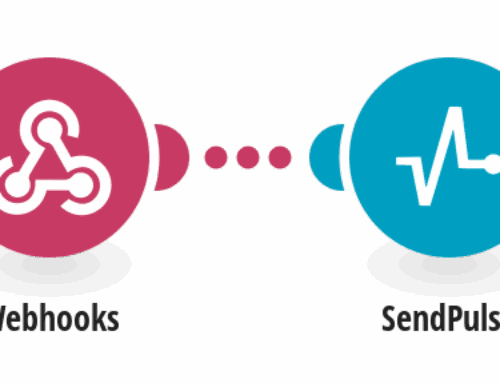The Ultimate Guide to Syncing HubSpot CRM Contacts with Google Contacts
Introduction to Contact Management Systems
In today’s fast-paced world, managing contacts efficiently is crucial. Whether you’re running a small business or a large enterprise, keeping track of customer information can be a daunting task without the right tools. This is where Customer Relationship Management (CRM) systems come into play.
HubSpot CRM is one of the leading platforms for managing customer interactions and data throughout the customer lifecycle. But what happens when you need to access your contacts on the go? That’s where syncing with Google Contacts comes in handy, providing easy access across all your devices.
Why Sync HubSpot CRM with Google Contacts?
Synchronizing your HubSpot CRM contacts with Google Contacts can save you time and reduce manual errors. By having your contacts accessible from anywhere, you can improve responsiveness and ensure you’re always prepared, whether on your smartphone or computer.
Furthermore, integration between these two platforms enhances productivity by allowing seamless communication and collaboration. Imagine the ease of having an up-to-date contact list that requires little to no maintenance from your side!
Understanding the Integration Process
The integration process might sound like a technical mambo jumbo, but it’s simpler than you think. It involves connecting your HubSpot account to your Google account to enable automatic updates between the two. This means any change made in HubSpot is reflected in Google Contacts and vice versa.
Although several sync strategies exist, finding the perfect match for your business needs is as essential as ensuring they play nice together. A smooth integration guarantees your workflows remain uninterrupted and efficient.
Setting Up Your HubSpot Account for Syncing
Before diving into the technical setup, ensure your HubSpot account is ready for synchronization. This means checking for any discrepancies within your contact list and addressing them before syncing. Cleaning up duplicates and ensuring consistent formatting are excellent ways to start the process.
Once you’re organized, navigate to the settings section in HubSpot. Here, you’ll find the necessary options for exporting and integrating contacts with other platforms, like Google Contacts.
Connecting HubSpot to Google Contacts
Connecting your HubSpot CRM to Google Contacts involves authorizing access between the two accounts. Begin by accessing your HubSpot settings and selecting the integration option. You will then need to authorize HubSpot to access your Google account, ensuring you grant the necessary permissions.
This step is crucial as it establishes the connection needed for data sharing between both platforms. Once approved, your contacts will begin to sync, and any modifications will reflect on both ends almost instantly.
Troubleshooting Common Issues
Like any tech-related task, you might encounter a few hiccups during integration. Connectivity issues, permission problems, or incorrect data fields are common obstacles. Don’t fret; they’re usually not as complex as solving a Rubik’s cube!
Ensure you’re logged into the correct accounts and double-check permissions. Sometimes, simply refreshing the integration or restarting the sync process can resolve these issues quickly. Keep in mind that support forums and user guides are excellent resources if you need further assistance.
Benefits of Synchronizing Contacts
By synchronizing your contacts, you create a more cohesive environment for your business. Consistency across platforms enables better communication and reduces the chances of missing vital updates or entries. This can lead to improved customer relations and higher satisfaction rates.
Additionally, having synchronized contacts frees up time for you to focus on other important aspects of your business. It lifts the burden of manual data entry, letting technology handle the heavy lifting while you concentrate on doing what you do best.
Maintaining Data Integrity and Security
Data integrity is paramount when handling sensitive customer information. Ensure regular checks are performed to verify the accuracy of synchronized contacts. This helps maintain the credibility of your CRM and ensures no vital information slips through the cracks.
Security should also be a primary concern. Always use strong passwords and two-factor authentication where possible to protect your accounts. This keeps customer data safe and builds trust with your clientele.
Conclusion
Integrating HubSpot CRM with Google Contacts is a strategic decision that can elevate your business operations. By leveraging these tools, you simplify contact management, enhance productivity, and foster stronger customer relationships. Remember, it’s not just about having the best tools but about using them effectively to drive success.
Frequently Asked Questions
1. Can I sync multiple HubSpot accounts with one Google account?
Typically, synchronization occurs between one HubSpot account and one Google account. For multiple accounts, consider consulting integration tools that might support multi-account configurations.
2. Are there any costs associated with integrating HubSpot with Google Contacts?
In most cases, basic integration features are free. However, advanced functionalities or third-party apps might incur charges. It’s best to review the terms of service for any additional costs.
3. How often should I check for sync errors?
Regular checks are recommended to maintain data accuracy. Consider setting a monthly reminder to audit your integrations and address any discrepancies promptly.
4. Will syncing affect my existing data in Google Contacts?
The synchronization process typically merges data, meaning new information from HubSpot is added to Google Contacts. Always back up important data before initiating sync activities.
5. What happens if I disconnect the integration?
Disconnecting stops future data synchronization but does not delete existing data. You may need to perform manual updates if you disconnect the accounts.









